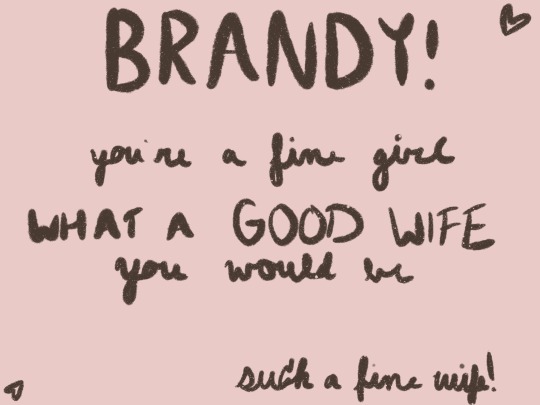#september 2019 art
Text




















Rockefeller Center declared a National Historic Landmark on September 26, 1988.
#Rockefeller Center#National Historic Landmark#26 September 1988#USA#US history#Radio City Music Hall#Art Deco#Manhattan#travel#New York City#summer 2018#2019#original photography#Raymond Hood#landmark#tourist attraction#daylight#night shot#30 Rock#public art#sculpture#Atlas by Lee Lawrie & Rene Paul Chambellan#International Building#facade#35th anniversary
109 notes
·
View notes
Text
finished writing a short drabble of pure fluff 🥰 well actually it’s not very pure… but yk… lmao i just need to edit it tomorrow then post the next day as usual !! it’s like a lil gift to you guys for my birthday <3
#promise i will dive back into the timeline next i’m actually dying to#i’m getting fonder of 2017-2019 iw!couple 🥺#hopefully i find the time in september ☹️#art rambles
28 notes
·
View notes
Text




wow together at long last
#i hope we all explode#i hope everyone who likes that one aa art post explodes if you know u know#i dont want to see aa for at least 5 years#i will always look st my friends and mutuals content always of course.#not even aa to me thats like collective ocs#if u ask me if i like aa/dgs. the answer is yes#asterisk. in the summer of 2020-#scratch that. it all started in september 2019-
8 notes
·
View notes
Photo
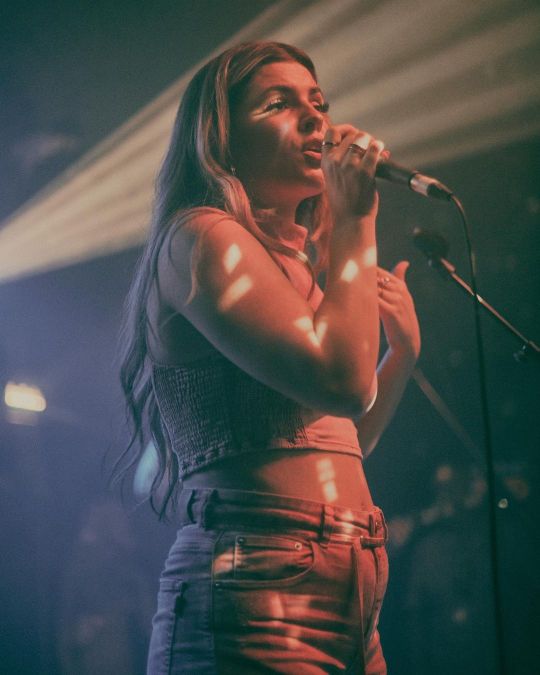
Photo by Ruby Gaunt - September 24, 2019
4 notes
·
View notes
Text

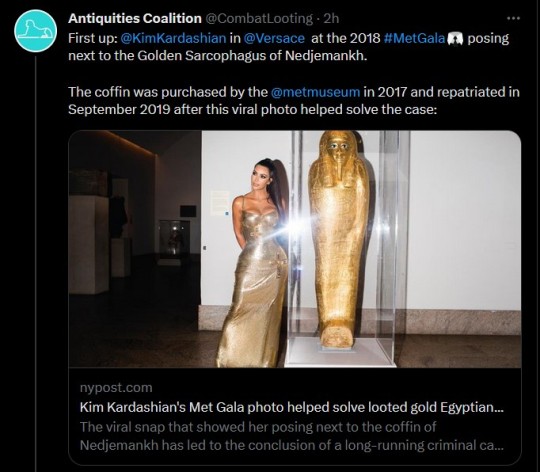
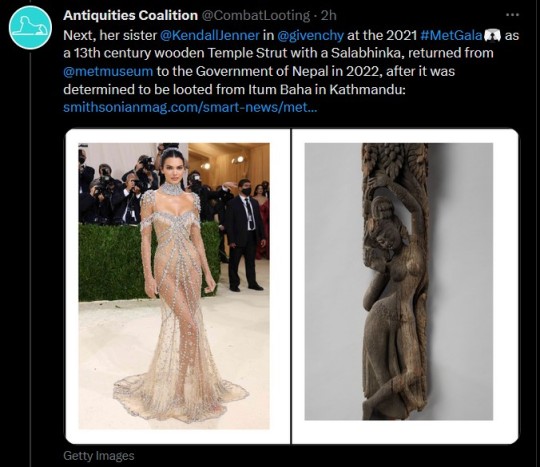
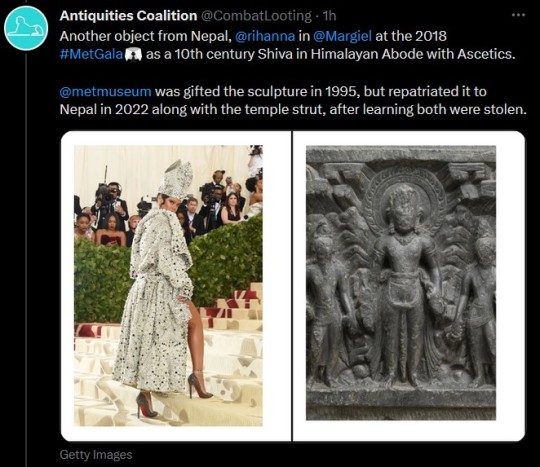

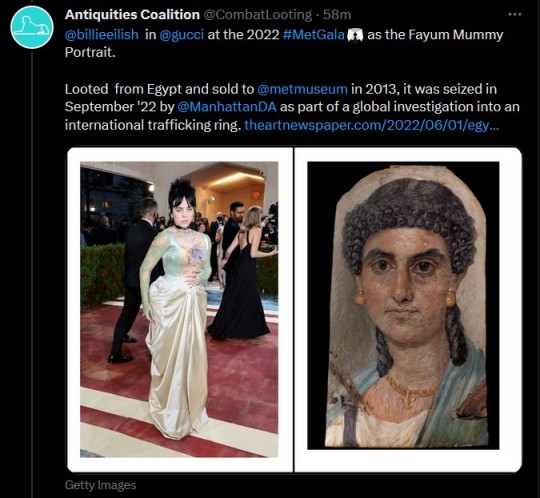
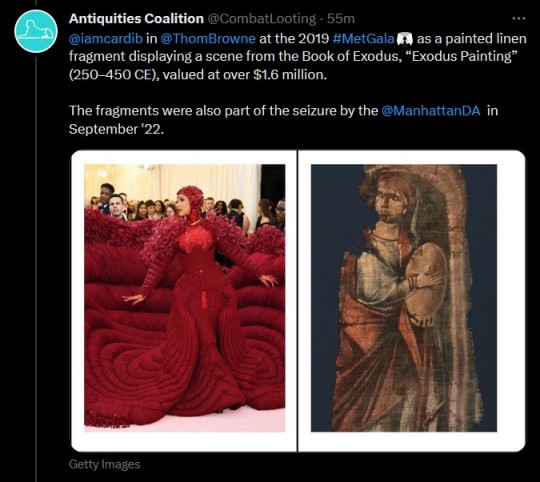
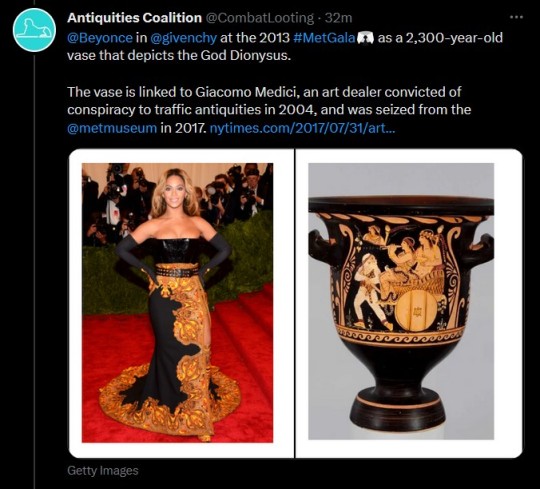
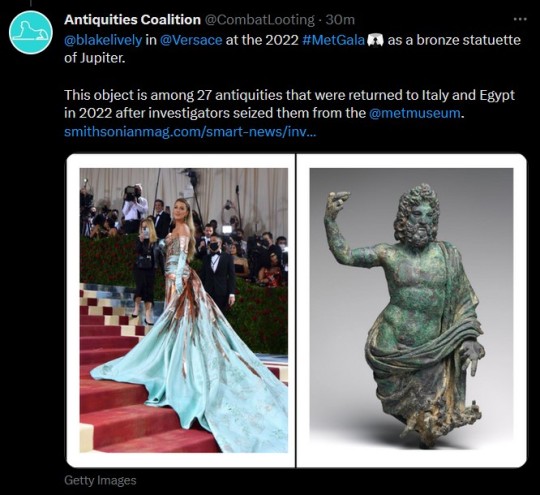
Looks vs. Loot at the Metropolitan Museum of Art by The Antiquities Coalition (@/CombatLooting) on Twitter
Transcription below the cut
1: The #MetGala may be "fashion's biggest night," but tonight's event hides some dark truths at @/metmuseum...including a long history of looted antiquities. To spotlight some of the contested objects from the Met's collection, we are featuring #MetGala vs. Loot [THREAD]
2. First up: @/KimKardashian in @/Versace at the 2018 #MetGala posing next to the Golden Sarcophagus of Nedjemankh. The coffin was purchased by @/metmuseum in 2017 and repatriated in 2019 after this viral photo helped solve the case. (link)
3. Next, her sister @/KendallJenner in @/givenchy at the 2021 #MetGala as the 13th century wooden Temple Strut with Salabhinka, returned from @/metmuseum to the Government of Nepal in 2022, after it was determined to be looked from Itum Baha in Kathmandu. (link)
4. Another object from Nepal, @/rihanna in @/Margiel at the 2018 #MetGala as a 10th century Shiva in Himalayan Adobe with Ascetics. @/metmuseum was gifted the sculpture in 1995, but repatriated it to Nepal in 2022 along with the temple strut, after learning both were stolen.
5. Dakota Johnson in @/gucci at the 2022 #MetGala as a terracotta kylix (c. 470 bCE). This piece, valued at $1.5 million, was seized from the @/metmuseum in July 2022 after being linked to Italian antiquities trafficker Gianfranco Becchina. (link)
6. @/billieeilish in @/gucci at the 2022 #MetGala as the Fayum Mummy Portrait. Looted from Egypt and sold to @/metmuseum in 2013, it was seized in September '22 by @/ManhattanDA as part of a global investigation into an international trafficking ring. (link)
7. @/iamcardib in @/ThomeBrowne at the 2019 #MetGala as a painted linen fragment displaying a scene from the Book of Exodus, 'Exodus Painting" (250-450 CE), valued at over $1.6 million. The fragments were also part of the seizure by the @/ManhattanDA in September '22.
8. @/Beyonce in @/givenchy at the 2013 #MetGala as a 2,300-year-old vase that depicts the god Dionysus. The vase is linked to Giacomo Medici, an art dealer convicted of conspiracy to traffic antiquities in 2004, and was seized from the @/metmuseum in 2017. (link)
9. @/blakelively in @/Versace at the 2022 #MetGala as a bronze statuette of Jupiter. This object is among 27 antiquities that were returned to Italy and Egypt in 2022 after investigators seized them from the @/metmuseum. (link)
5K notes
·
View notes
Text
In 2006, the year Taylor Swift released her first single, a closeted country singer named Chely Wright, then 35, held a 9-millimeter pistol to her mouth. Queer identity was still taboo enough in mainstream America that speaking about her love for another woman would have spelled the end of a country music career. But in suppressing her identity, Ms. Wright had risked her life.
In 2010, she came out to the public, releasing a confessional memoir, “Like Me,” in which she wrote that country music was characterized by culturally enforced closeting, where queer stars would be seen as unworthy of investment unless they lied about their lives. “Country music,” she wrote, “is like the military — don’t ask, don’t tell.”
The culture in which Ms. Wright picked up that gun — the same one in which Ms. Swift first became a star — was stunningly different from today’s. It’s dizzying to think about the strides that have been made in Americans’ acceptance of the L.G.B.T.Q. community over the past decade: marriage equality, queer themes dominating teen entertainment, anti-discrimination laws in housing and, for now, in the workplace. But in recent years, a steady drip of now-out stars — Cara Delevingne, Colton Haynes, Elliot Page, Kristen Stewart, Raven-Symoné and Sam Smith among them — have disclosed that they had been encouraged to suppress their queerness in order to market projects or remain bankable.
The culture of country music hasn’t changed so much that homophobia is gone. Just this past summer, Adam Mac, an openly gay country artist, was shamed out of playing at a festival in his hometown because of his sexual orientation. In September, the singer Maren Morris stepped away from country music; she said she did so in part because of the industry’s lingering anti-queerness. If country music hasn’t changed enough, what’s to say that the larger entertainment industry — and, by extension, our broader culture — has?
Periodically, I return to a video, recorded by a shaky hand more than a decade ago, of Ms. Wright answering questions at a Borders bookstore about her coming out. She likens closeted stardom to a blender, an “insane” and “inhumane” heteronormative machine in which queer artists are chewed to bits.
“It’s going to keep going,” Ms. Wright says, “until someone who has something to lose stands up and just says ‘I’m gay.’ Somebody big.” She continues: “We need our heroes.”
What if someone had already tried, at least once, to change the culture by becoming such a hero? What if, because our culture had yet to come to terms with homophobia, it wasn’t ready for her?
What if that hero’s name was Taylor Alison Swift?
In the world of Taylor Swift, the start of a new “era” means the release of new art (an album and the paratexts — music videos, promotional ephemera, narratives — that supplement it) and a wholesale remaking of the aesthetics that will accompany its promotion, release and memorializing. In recent years, Ms. Swift has dominated pop culture to such a degree that these transformations often end up altering American culture in the process.
In 2019, she was set to release a new album, “Lover,” the first since she left Big Machine Records, her old Nashville-based label, which she has since said limited her creative freedom. The aesthetic of what would be known as the “Lover Era” emerged as rainbows, butterflies and pastel shades of blue, purple and pink, colors that subtly evoke the bisexual pride flag.
On April 26, Lesbian Visibility Day, Ms. Swift released the album’s lead single, “ME!,” in which she sings about self-love and self-acceptance. She co-directed a campy music video to accompany it, which she would later describe as depicting “everything that makes me, me.” It features Ms. Swift dancing at a pride parade, dripping in rainbow paint and turning down a man’s marriage proposal in exchange for a … pussy cat.
At the end of June, the L.G.B.T.Q. community would celebrate the 50th anniversary of the Stonewall Riots. On June 14, Ms. Swift released the video for her attempt at a pride anthem, “You Need to Calm Down,” in which she and an army of queer celebrities from across generations — the “Queer Eye” hosts, Ellen DeGeneres, Billy Porter, Hayley Kiyoko, to name a few — resist homophobia by living openly. Ms. Swift sings that outrage against queer visibility is a waste of time and energy: “Why are you mad, when you could be GLAAD?”
The video ends with a plea: “Let’s show our pride by demanding that, on a national level, our laws truly treat all of our citizens equally.” Many, in the press and otherwise, saw the video as, at best, a misguided attempt at allyship and, at worst, a straight woman co-opting queer aesthetics and narratives to promote a commercial product.
Then, Ms. Swift performed “Shake It Off” as a surprise for patrons at the Stonewall Inn. Rumors — that were, perhaps, little more than fantasies — swirled in the queerer corners of her fandom, stoked by a suggestive post by the fashion designer Christian Siriano. Would Ms. Swift attend New York City’s WorldPride march on June 30? Would she wear a dress spun from a rainbow? Would she give a speech? If she did, what would she declare about herself?
The Sunday of the march, those fantasies stopped. She announced that the music executive Scooter Braun, who she described as an “incessant, manipulative” bully, had purchased her masters, the lucrative original recordings of her work.
Ms. Swift’s “Lover” was the first record that she created with nearly unchecked creative freedom. Lacking her old label’s constraints, she specifically chose to feature activism for and the aesthetics of the L.G.B.T.Q. community in her confessional, self-expressive art. Even before the sale of her masters, she appeared to be stepping into a new identity — not just an aesthetic — that was distinct from that associated with her past six albums.
When looking back on the artifacts of the months before that album’s release, any close reader of Ms. Swift has a choice. We can consider the album’s aesthetics and activism as performative allyship, as they were largely considered to be at the time. Or we can ask a question, knowing full well that we may never learn the answer: What if the “Lover Era” was merely Ms. Swift’s attempt to douse her work — and herself — in rainbows, as so many baby queers feel compelled to do as they come out to the world?
There’s no way of knowing what could have happened if Ms. Swift’s masters hadn’t been sold. All we know is what happened next. In early August, Ms. Swift posted a rainbow-glazed photo of a series of friendship bracelets, one of which says “PROUD” with beads in the color of the bisexual pride flag. Queer people recognize that this word, deployed this way, typically means that someone is proud of their own identity. But the public did not widely view this as Ms. Swift’s coming out.
Then, Vogue released an interview with Ms. Swift that had been conducted in early June. When discussing her motivations for releasing “You Need to Calm Down,” Ms. Swift said, “Rights are being stripped from basically everyone who isn’t a straight white cisgender male.” She continued: “I didn’t realize until recently that I could advocate for a community that I’m not a part of.” That statement suggests that Ms. Swift did not, in early June, consider herself part of the L.G.B.T.Q. community; it does not illuminate whether that is because she was a straight, cis ally or because she was stuck in the shadowy, solitary recesses of the closet.
On Aug. 22, Ms. Swift publicly committed herself to the as-of-then-unproven project of rerecording and rereleasing her first six albums. The next day, she finally released “Lover,” which raises more questions than it answers. Why does she have to keep secrets just to keep her muse, as all her fans still sing-scream on “Cruel Summer”? About what are the “hundred thrown-out speeches I almost said to you,” in her chronicle of self-doubt, “The Archer,” if not her identity? And what could the album’s closing words, which come at the conclusion of “Daylight,” a song about stepping out of a 20-year darkness and choosing to “let it go,” possibly signal?
I want to be defined by the things that I love,
Not the things I hate,
Not the things that I’m afraid of, I’m afraid of,
Not the things that haunt me in the middle of the night,
I just think that,
You are what you love.
The first time I viewed “Lover” through the prism of queerness, I felt delirious, almost insane. I kept wondering whether what I was perceiving in her work was truly there or if it was merely a mirage, born of earnest projection.
My longtime reading of Ms. Swift’s celebrity — like that of a majority of her fan base — had been stuck in the lingering assumptions left by a period that began more than a decade and a half ago, when a girl with an overexaggerated twang, Shirley Temple curls and Georgia stars in her eyes became famous. Then, she presented as all that was to be expected of a young starlet: attractive yet virginal, knowing yet naïve, not talented enough to be formidable, not commanding enough to be threatening, confessional, eager to please. Her songs earnestly depicted the fantasies of a girl raised in a traditional culture: high school crushes and backwoods drives, princelings and wedding rings, declarations of love that climax only in a kiss — ideally in the pouring rain.
When Ms. Swift was trying to sell albums in that late-2000s media environment, her songwriting didn’t match the image of a sex object, the usual role reserved for female celebrities in our culture. Instead, the story the public told about her was that she laundered her affection to a litter of promising grown men, in exchange for songwriting inspiration. A young Ms. Swift contributed to this narrative by hiding easy-to-decode clues in liner notes that suggested a certain someone was her songs’ inspiration (“SAM SAM SAM SAM SAM SAM,” “ADAM,” “TAY”) or calling out an ex-boyfriend on the “Ellen” show and “Saturday Night Live.” Despite the expansive storytelling in Ms. Swift’s early records, her public image often cast a man’s interest as her greatest ambition.
As Ms. Swift’s career progressed, she began to remake that image: changing her style and presentation, leaving country music for pop and moving from Nashville to New York. By 2019, her celebrity no longer reflected traditional culture; it had instead become a girlboss-y mirror for another dominant culture — that of white, cosmopolitan, neoliberal America.
But in every incarnation, the public has largely seen those songs — especially those for which she doesn’t directly state her inspiration — as cantos about her most recent heterosexual love, whether that idea is substantiated by evidence or not. A large portion of her base still relishes debating what might have happened with the gentleman caller who supposedly inspired her latest album. Feverish discussions of her escapades with the latest yassified London Boy or mustachioed Mr. Americana fuel the tabloid press — and, embarrassingly, much of traditional media — that courts fan engagement by relentlessly, unquestioningly chronicling Ms. Swift’s love life.
Even in 2023, public discussion about the romantic entanglements of Ms. Swift, 34, presumes that the right man will “finally” mean the end of her persistent husbandlessness and childlessness. Whatever you make of Ms. Swift’s extracurricular activities involving a certain football star (romance for the ages? strategic brand partnership? performance art for entertainment’s sake?), the public’s obsession with the relationship has been attention-grabbing, if not lucrative, for all parties, while reinforcing a story that America has long loved to tell about Ms. Swift, and by extension, itself.
Because Ms. Swift hasn’t undeniably subverted our culture’s traditional expectations, she has managed, in an increasingly fractured cultural environment, to simultaneously capture two dominant cultures — traditional and cosmopolitan. To maintain the stranglehold she has on pop culture, Ms. Swift must continue to tell a story that those audiences expect to consume; she falls in love with a man or she gets revenge. As a result, her confessional songs languish in a place of presumed stasis; even as their meaning has grown deeper and their craft more intricate, a substantial portion of her audience’s understanding of them remains wedded to the same old narratives.
But if interpretations of Ms. Swift’s art often languish in stasis, so do the millions upon millions of people who love to play with the dollhouse she has constructed for them. Her dominance in pop culture and the success of her business have given her the rare ability to influence not only her industry but also the worldview of a substantial portion of America. How might her industry, our culture and we, ourselves, change if we made space for Ms. Swift to burn that dollhouse to the ground?
Anyone considering the whole of Ms. Swift’s artistry — the way that her brilliantly calculated celebrity mixes with her soul-baring art — can find discrepancies between the story that underpins her celebrity and the one captured by her songs. One such gap can be found in her “Lover” era. Others appear alongside “dropped hairpins,” or the covert ways someone can signal queer identity to those in the know while leaving others comfortable in their ignorance. Ms. Swift dropped hairpins before “Lover” and has continued to do so since.
Sometimes, Ms. Swift communicates through explicit sartorial choices — hair the colors of the bisexual pride flag or a recurring motif of rainbow dresses. She frequently depicts herself as trapped in glass closets or, well, in regular closets. She drops hairpins on tour as well, paying tribute to the Serpentine Dance of the lesbian artist Loie Fuller during the Reputation Tour or referencing “The Ladder,” one of the earliest lesbian publications in the United States, in her Eras Tour visuals.
During the Eras Tour, Ms. Swift traps her past selves — including those from her “Lover” era — in glass closets.
Dropped hairpins also appear in Ms. Swift’s songwriting. Sometimes, the description of a muse — the subject of her song, or to whom she sings — seems to fit only a woman, as it does in “It’s Nice to Have a Friend,” “Maroon” or “Hits Different.” Sometimes she suggests a female muse through unfulfilled rhyme schemes, as she does in “The Very First Night,” when she sings “didn’t read the note on the Polaroid picture / they don’t know how much I miss you” (“her,” instead of that pesky little “you,” would rhyme). Her songwriting also noticeably alludes to poets whose muses the historical record incorrectly cast as men — Emily Dickinson chief among them — as if to suggest the same fate awaits her art. Stunningly, she even explicitly refers to dropping hairpins, not once, but twice, on two separate albums.
In isolation, a single dropped hairpin is perhaps meaningless or accidental, but considered together, they’re the unfurling of a ballerina bun after a long performance. Those dropped hairpins began to appear in Ms. Swift’s artistry long before queer identity was undeniably marketable to mainstream America. They suggest to queer people that she is one of us. They also suggest that her art may be far more complex than the eclipsing nature of her celebrity may allow, even now.
Since at least her “Lover” era, Ms. Swift has explicitly encouraged her fans to read into the coded messages (which she calls “Easter eggs”) she leaves in music videos, social media posts and interviews with traditional media outlets, but a majority of those fans largely ignore or discount the dropped hairpins that might hint at queer identity. For them, acknowledging even the possibility that Ms. Swift could be queer would irrevocably alter the way they connect with her celebrity, the true product they’re consuming.
There is such public devotion to the traditional narrative Ms. Swift embodies because American culture enshrines male power. In her sweeping essay, “Compulsory Heterosexuality and Lesbian Existence,” the lesbian feminist poet Adrienne Rich identified the way that male power cramps, hinders or devalues women’s creativity. All of the sexist undertones with which Ms. Swift’s work can be discussed (often, even, by fans) flow from compulsory heterosexuality, or the way patriarchy draws power from the presumption that women naturally desire men. She must write about men she surely loves or be unbankable; she must marry and bear children or remain a child herself; she must look like, in her words, a “sexy baby” or be undesirable, “a monster on the hill.”
A woman who loves women is most certainly a monster to a society that prizes male power. She can fulfill none of the functions that a traditional culture imagines — wife, mother, maid, mistress, whore — so she has few places in the historical record. The Sapphic possibility of her work is ignored, censored or lost to time. If there is queerness earnestly implied in Ms. Swift’s work, then it’s no wonder that it, like that of so many other artists before her, is so often rendered invisible in the public imagination.
While Ms. Swift’s songs, largely written from her own perspective, cannot always conform to the idea of a woman our culture expects, her celebrity can. That separation, between Swift the songwriter and Swift the star, allows Ms. Swift to press against the golden birdcage in which she has found herself. She can write about women’s complexity in her confessional songs, but if ever she chooses not to publicly comply with the dominant culture’s fantasy, she will remain uncategorizable, and therefore, unsellable.
Her star — as bright as it is now — would surely dim.
Whether she is conscious of it or not, Ms. Swift signals to queer people — in the language we use to communicate with one another — that she has some affinity for queer identity. There are some queer people who would say that through this sort of signaling, she has already come out, at least to us. But what about coming out in a language the rest of the public will understand?
The difference between any person coming out and a celebrity doing so is the difference between a toy mallet and a sledgehammer. It’s reasonable for celebrities to be reticent; by coming out, they potentially invite death threats, a dogged tabloid press that will track their lovers instead of their beards, the excavation of their past lives, a torrent of public criticism and the implosion of their careers. In a culture of compulsory heterosexuality, to stop lying — by omission or otherwise — is to risk everything.
American culture still expects that stars are cis and straight until they confess themselves guilty. So, when our culture imagines a celebrity’s coming out, it expects an Ellen-style announcement that will submerge the past life in phoenix fire and rebirth the celebrity in a new image. In an ideal culture, wearing a bracelet that says “PROUD,” waving a pride flag onstage, placing a rainbow in album artwork or suggestively answering fan questions on Instagram would be enough. But our current reality expects a supernova.
Because of that expectation, stars end up trapped behind glass, which is reinforced by the tabloid press’s subtle social control. That press shapes the public’s expectations of others’ identities, even when those identities are chasms away from reality. Celebrities who master this press environment — Ms. Swift included — can bolster their business, but in doing so, they reinforce a heteronormative culture that obsesses over pregnancy, women’s bodies and their relationships with men.
That environment is at odds with the American movement for L.G.B.T.Q. equality, which still has fights to win — most pressingly, enshrining trans rights and squashing nonsensical culture wars. But lately I’ve heard many of my young queer contemporaries — and the occasional star — wonder whether the movement has come far enough to dispense with the often messy, often uncomfortable process of coming out, over and over again.
That questioning speaks to an earnest conundrum that queer people confront regularly: Do we live in this world, or the world to which we ought to aspire?
Living in aspiration means ignoring the convention of coming out in favor of just … existing. This is easier for those who can pass as cis and straight if need be, those who are so wealthy or white that the burden of hiding falls to others and those who live in accepting urban enclaves. This is a queer life without friction; coming out in a way straight people can see is no longer a prerequisite for acceptance, fulfillment and equality.
This aspiration is tremendous, but in our current culture, it is available only to a privileged few. Should such an inequality of access to aspiration become the accepted state of affairs, it would leave those who can’t hide to face society’s cruelest actors without the backing of a vocal, activated community. So every queer person who takes issue with the idea that we must come out ought to ask a simple question — what do we owe one another?
If coming out is primarily supposed to be an act of self-actualization, to form our own identities, then we owe one another nothing. This posture recognizes that the act of coming out implicitly reinforces straight and cis identities as default, which is not worth the rewards of outness.
But if coming out is supposed to be a radical act of resistance that seeks to change the way our society imagines people to be, then undeniable visibility is essential to make space for those without power. In this posture, queer people who can live in aspiration owe those who cannot a real world in which our expansive views of love and gender aren’t merely tolerated but celebrated. We have no choice but to actively, vocally press against the world we’re in, until no one is stuck in it.
And so just for a little while longer, we need our heroes.
But if queer people spend all of our time holding out for a guiding light, we might forgo a more pressing question that if answered, just might inch all of us a bit closer to aspiration. The next time heroes appear, are we ready to receive them?
It takes neither a genius nor a radical to see queerness implied by Ms. Swift’s work. But figuring out how to talk about it before the star labels herself is another matter. Right now, those who do so must inject our perceptions with caveats and doubt or pretend we cannot see it (a lie!) — implicitly acquiescing to convention’s constraints in the name of solidarity.
Lying is familiar to queer people; we teach ourselves to do it from an early age, shrouding our identities from others, and ourselves. It’s not without good reason. To maintain the safety (and sometimes the comfort) of the closet, we lie to others, and, most crucially, we allow others to believe lies about us, seeing us as something other than ourselves. Lying is doubly familiar to those of us who are women. To reduce friction, so many of us still shrink life to its barest version in the name of honor or safety, rendering our lives incomplete, our minds lobotomized and our identities unexplored.
By maintaining a culture of lying about what we, uniquely, have the knowledge and experience to see, we commit ourselves to a vow of silence. That vow may protect someone’s safety, but when it is applied to works of culture, it stymies our ability to receive art that has the potential to change or disrupt us. As those with queer identity amass the power of commonplaceness, it’s worth questioning whether the purpose of one of the last great taboos that constrains us befits its cost.
In every case, is the best form of solidarity still silence?
I know that discussing the potential of a star’s queerness before a formal declaration of identity feels, to some, too salacious and gossip-fueled to be worthy of discussion. They might point to the viciousness of the discourse around “queerbaiting” (in which I have participated); to the harm caused by the tabloid press’s dalliances with outing; and, most crucially, to the real material sacrifices that queer stars make to come out, again and again, as reasons to stay silent.
I share many of these reservations. But the stories that dominate our collective imagination shape what our culture permits artists and their audiences to say and be. Every time an artist signals queerness and that transmission falls on deaf ears, that signal dies. Recognizing the possibility of queerness — while being conscious of the difference between possibility and certainty — keeps that signal alive.
So, whatever you make of Ms. Swift’s sexual orientation or gender identity (something that is knowable, perhaps, only to her) or the exact identity of her muses (something better left a mystery), choosing to acknowledge the Sapphic possibility of her work has the potential to cut an audience that is too often constrained by history, expectation and capital loose from the burdens of our culture.
To start, consider what Ms. Swift wrote in the liner notes of her 2017 album, “reputation”: “When this album comes out, gossip blogs will scour the lyrics for the men they can attribute to each song, as if the inspiration for music is as simple and basic as a paternity test.”
Listen to her. At the very least, resist the urge to assume that when Ms. Swift calls the object of her affection “you” in a song, she’s talking about a man with whom she’s been photographed. Just that simple choice opens up a world of Swiftian wordplay. She often plays with pronouns, trading “you” and “him” so that only someone looking for a distinction between two characters might find one. Turns of phrase often contain double or even triple meanings. Her work is a feast laid specifically for the close listener.
Choosing to read closely can also train the mind to resist the image of an unmarried woman that compulsory heterosexuality expects. And even if it is only her audience who points at rainbows, reading Ms. Swift’s work as queer is still worthwhile, for it undermines the assumption that queer identity impedes pop superstardom, paving the way for an out artist to have the success Ms. Swift has.
After all, would it truly be better to wait to talk about any of this for 50, 60, 70 years, until Ms. Swift whispers her life story to a biographer? Or for a century or more, when Ms. Swift’s grandniece donates her diaries to some academic library, for scholars to pore over? To ensure that mea culpas come only when Ms. Swift’s bones have turned to dust and fragments of her songs float away on memory’s summer breeze?
I think not. And so, I must say, as loudly as I can, “I can see you,” even if I risk foolishness for doing so.
I remember the first time I knew I had seen Taylor Alison Swift break free from the trap of stardom. I wasn’t sitting in a crowded stadium in the pouring rain or cuddled up in a movie theater with a bag of popcorn. I was watching a grainy, crackling livestream of the Eras Tour, captured on a fan’s phone.
It’s late at night, the beginning of her acoustic set of surprise songs, this time performed in a yellow dress. She begins playing “Hits Different.” It’s a new song, full of puns, double entendres and wordplay, that toys with the glittering identities in which Ms. Swift indulges.
She’s rushing, as if stopping, even for a second, will cause her to lose her nerve. She stumbles at the bridge, pauses and starts again; the queen of bridges will not mess this up, not tonight.
There it is, at the bridge’s end: “Bet I could still melt your world; argumentative, antithetical dream girl.” An undeniable declaration of love to a woman. As soon as those words leave her lips, she lets out a whoop, pacing around the stage with a grin that cannot be contained.
For a moment, Ms. Swift was out of the woods she had created for herself as a teenager, floating above the trees. The future was within reach; she would, and will, soon take back the rest of her words, her reputation, her name. Maybe the world would see her, maybe it wouldn’t.
But on that stage, she found herself. I was there. Through a fuzzy fancam, I saw it.
And somehow, that was everything.
#ooooh my word this was BREATHTAKING and so well-said#because coming out is in fact a very delicate thing#full article here for the tumblr crowd!#taylor swift#articles#new york times#gaylor swift#gaylor#lover#chely wright
227 notes
·
View notes
Text

No Deadlines:
🗓 Larried In Vegas Fic & Art Fest @larriedinvegasficfest (ao3)
🗓 1000 Feelings For Which There Are No Names @1000feelingsfics (ao3)
🗓 1D Dick Prints & Grey Sweatpants Fest @1dgreysweatpants (ao3)
🗓 Harry Is Louis’ Baby Fic Fest @harryislouisbabyficfest (ao3)
🗓1D Handkerchief Fest @1dhankyfest (ao3)
Coming Soon:
🔔 Zayn's Albums Fic Fest @zaynsalbumsficfest (17th May)
Prompt Submissions:
💡Louis Rare Pair Fest @louisrarepairfest (sign-ups: 1st May)
💡Second Time's A Charm Fest @newsecondtimesacharmfest (sign-ups: 13th May)
No Sign-Ups Necessary:
⏳Wankfest @wankersday (due: 28th May)
Sign-Ups:
⌛️Top Harry Fic Fest @topharryficfest (until: 27th April)
⌛Bottom Louis Fic Fest @bottomlouisficfest (until: 12th May)
⌛1D Aro/Ace Fic Fest @1daroaceficfest (until: 1st June)
⌛HL Mpreg Fic Fest @hlmpregficfest (stay open, due: 1st June)
⌛1D Alpha Louis Fest @1dalphalouisfest (stay open, until: 30th June)
⌛Larry After Dark Fic Fest @larryafterdarkfest (stay open, due: 5th July)
⌛One Direction Folklore Fest @onedirectionfolklorefest (until: 21st August)
⌛1D I Do Fest @1didofest (stay open, until: 28th September)
⌛Zouis Fest @zouisfics (stay open, until: 7th October)
Writing:
📝1D Dystopian Fest @1ddystopianfest (due: 28th April)
📝1D Comfort Fic fest @comfortficfest (posting: 16th May)
📝1D Teamwork Fest @1dteamworkfest (due: 31st May)
📝1D Omegaverse Fic Fest @1domegaverseficfest (until: 1st June)
📝1D Astro Fic Fest @1dastroficfest (posting: 24th June)
📝1D Flower Fest @1d-flower-fest (due: 18th August)
Fics:
📚Zayn's Album Fic Fest @zaynsalbumsficfest (ao3)
📚1D Rom-Com Fic Fest @romcom1dficfest (ao3)
📚1D Soulmate Fest @1dsoulmatefest (ao3)
📚Dirty Thirty Fest @dirtythirtyfest (ao3)
📚1D Song Fic Fest @1dsongfest (ao3)
📚Girl Direction Femslash Festuary @girldirectionfest (ao3)
📚Second Time's A Charm Fest Collection (ao3)
📚Not Just Smut Fic Fest @notjustsmutficfest (ao3)
📚Omega Harry Fest @omegaharryfest (ao3)
📚One Direction Big Bang @onedirectionbigbang (ao3)
2023 | 2022 | 2021 | 2020 | 2019 | 2018 | 2017
Last updated: 20th April 2024
Please let me know if I’m missing something!
160 notes
·
View notes
Photo










The Rockefeller Center was declared a National Historic Landmark on September 26, 1988.
#Radio City Music Hall#summer 2018#2019#original photography#vacation#Rockefeller Center#National Historic Landmark#26 September 1988#travel#Midtown Manhattan#New York City#tourist attraction#landmark#Art Deco#architecture#cityscape#30 Rockefeller Plaza#Raymond Hood#Edward Durell Stone#Donald Deskey#Wisdom by Lee Lawrie#Atlas by Lee Lawrie and Rene Paul Chambellan#neon sign
1 note
·
View note
Text
A Young Person's Guide to 18th-Century Western Fashion
unabridged version at blogspot
General info
Cox, Abby. "I Wore 18th-Century Clothing *Every Day for 5 YEARS & This Is What I Learned (Corsets Aren't Bad!)." YouTube. May 10, 2020.
Cullen, Oriole. “Eighteenth-Century European Dress.” In Heilbrunn Timeline of Art History. New York: The Metropolitan Museum of Art, 2004.
Glasscock, Jessica. "Eighteenth-Century Silhouette and Support." In Heilbrunn Timeline of Art History. New York: The Metropolitan Museum of Art, 2004.
Accessories
Banner, Bernadette. "Women's Pockets Weren't Always a Complete Disgrace | A Brief History: England, 15th c - 21st c." YouTube. April 10, 2021.
Colonial Williamsburg. "#TradesTuesday: Men's Accessories." YouTube. June 13, 2021.
Murden, Sarah. "The Georgian era fashion for straw hats." All Things Georgian. December 6, 2018.
Cosmetics & hygiene
Cox, Abby. "I Followed an 18th-Century Moisturizer & Sunscreen Recipe & it kinda worked??." YouTube. February 21, 2021.
Cox, Abby. "We tried making *5* different 250 year old rouge (blush) recipes || [real] regencycore makeup." YouTube. August 29, 2021.
JYF Museums. "Hygiene in the 18th Century | From the Farm to the Army." YouTube. August 21, 2021.
Décor
Heckscher, Morrison H. “American Rococo.” In Heilbrunn Timeline of Art History. New York: The Metropolitan Museum of Art, 2003.
Munger, Jeffrey. “French Porcelain in the Eighteenth Century.” In Heilbrunn Timeline of Art History. New York: The Metropolitan Museum of Art, 2003.
Formal wear
SnappyDragon. "This dressing gown changed fashion forever : the feminist history of going out in loungewear." YouTube. April 15, 2022.
Stowell, Lauren. "The Many Types of 18th Century Gowns." American Duchess. March 15, 2013.
Zebrowska, Karolina. "Cottagecore Style Is Much Older Than You Think." YouTube. June 30, 2021.
Hair care
Cox, Abby. "I made 250-year-old Hair Products Using Original Recipes (and animal fat...)." YouTube. November 7, 2021.
Cox, Abby. "I tried a 300-year-old hair care routine for a year & this is what I learned (it's awesome!)." YouTube. January 23, 2022.
Cox, Abby. "What's the Deal with 18th Century Wigs? (and why Bridgerton really messed this up)." YouTube. June 1, 2023.
Laundry
Cox, Abby. "Making 300 Year Old SLIME for Laundry Day." YouTube. June 15, 2023.
Townsends. "Historical Laundry Part 2: No Washing Machine, No Dryer, Hit It With A Stick?" YouTube. June 3, 2019.
Outer- & working-wear
JYF Museum. "Getting Dressed | Clothing for an 18th Century Middling Woman." YouTube. March 18, 2021.
Major, Joanne. "The practicalities of wearing riding habits, and riding ‘en cavalier’." All Things Georgian. March 12, 2019.
Rudolph, Nicole. "What did Pirates ACTUALLY Wear? Fashion at Sea in the 18th c & Our Flag Means Death Costumes." YouTube. May 8, 2022.
Shoes
Chin, Cynthia E. "Martha Washington's Shoes." George Washington's Mount Vernon. No date.
Murden, Sarah. "18th-century shoes." All Things Georgian. December 15, 2015.
Rudolph, Nicole. "Real 18th century Shoes? Historical Shoemaker Examines an Antique." YouTube. December 13, 2020.
Textiles
Cox, Abby. "18th Century Printed Cotton Do's & Don't's." American Duchess. December 23, 2019.
Stowell, Lauren. "Fabrics for the 18th Century and Beyond." American Duchess. June 14, 2021.
Townsends. "Oil Cloth - Waterproof Coverings for Your Campsite." YouTube. July 30, 2018.
Undergarments
Major, Joanne. "Quilted Petticoats: worn by all women and useful in more ways than one." All Things Georgian. November 20, 2018.
Rudolph, Nicole. "Making 18th century Stays for the Ideal Body Shape : Historical Undergarments." YouTube. August 12, 2023.
SnappyDragon. "RUMP ROAST : Ranking historical fashion's wildest fake butt pads." YouTube. October 27, 2023.
Townsends. "Sewing Histories' Most Popular Garment - The Fabric Of History - Townsends." YouTube. September 3, 2022.
#reference#history#abby cox#bernadette banner#fashion#hair care#hairstyle#youtube#video#nicole rudolph#townsends#us history#american history#colonial williamsburg#jamestown#georgian era#rococo#1700s#american duchess#mount vernon#bridgerton#the metropolitan museum of art#our flag means death
139 notes
·
View notes
Text

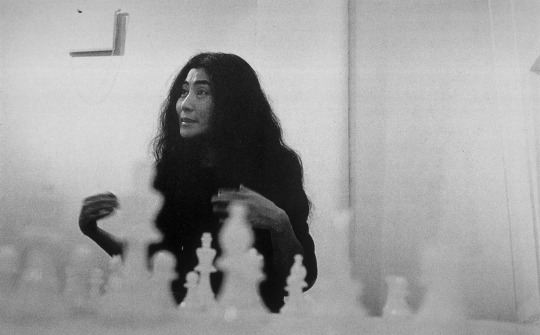



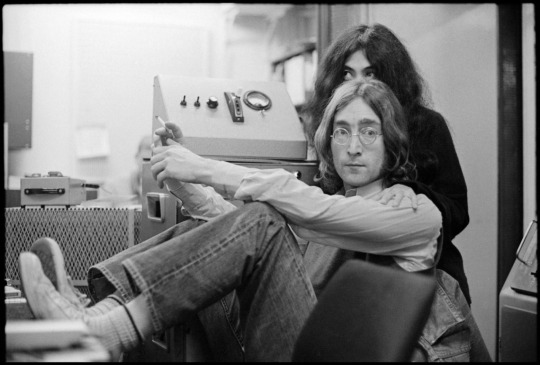

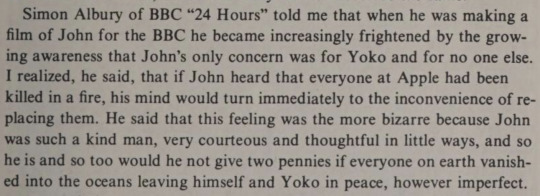
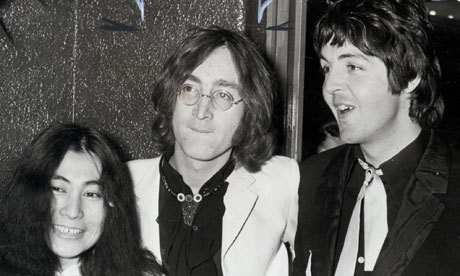
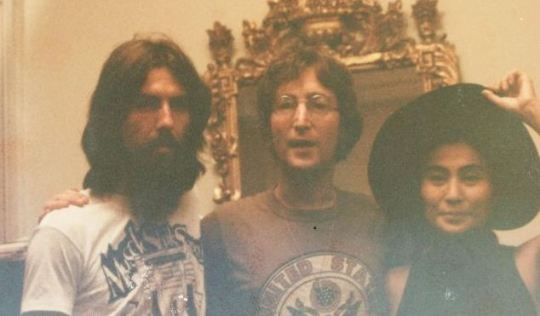

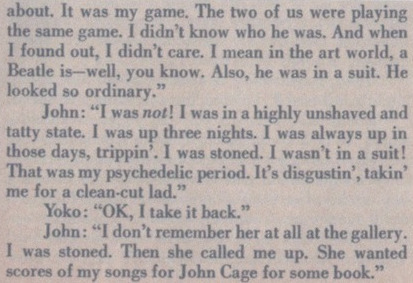
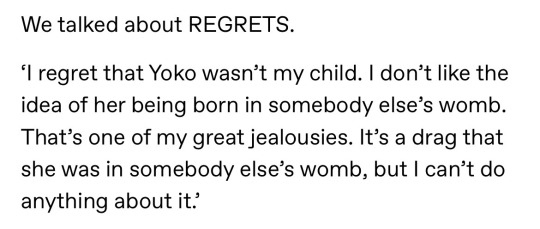

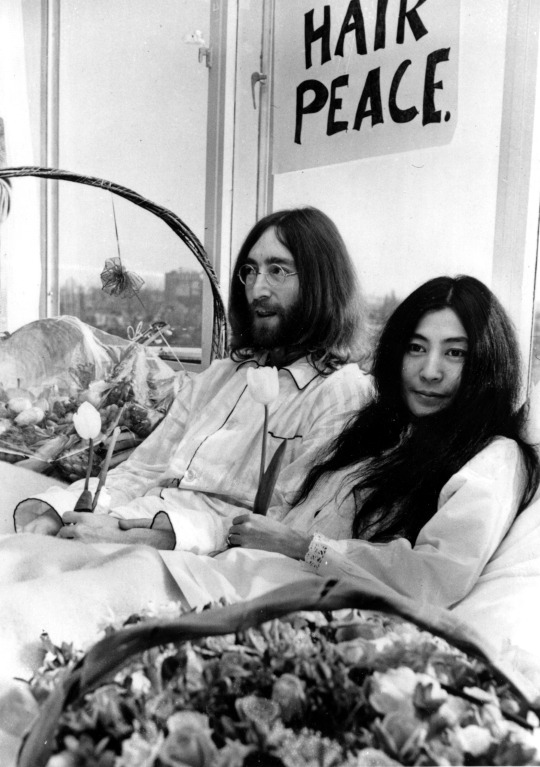
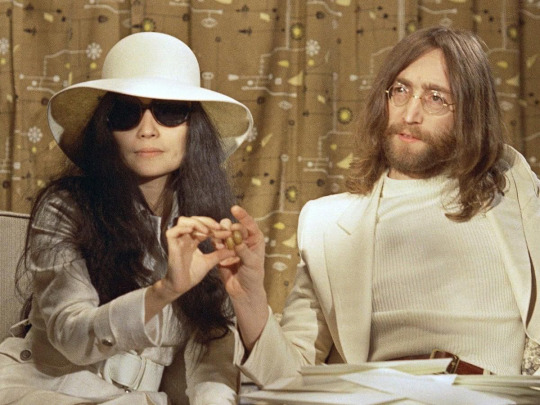



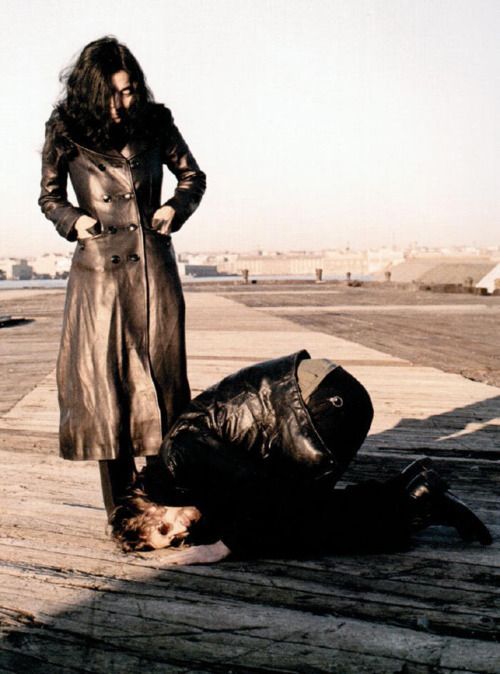

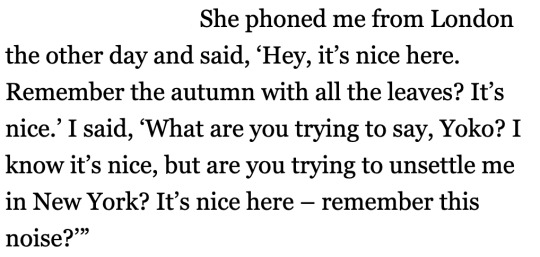
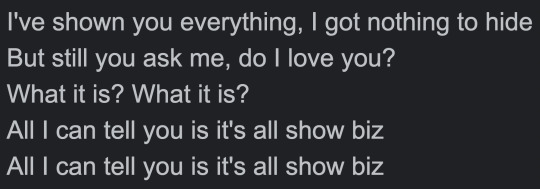


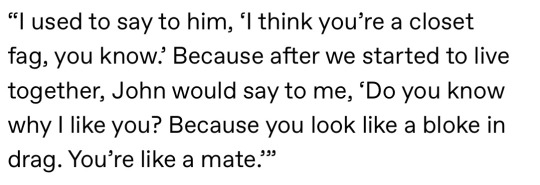



John and Yoko
The Beatles, Happiness is a Warm Gun (1968) // Yoko Ono, Play It By Trust (1966) // John Lennon, Yoko Ono, and Robert Fraser at the opening of You Are Here (1968) // John Lennon and Yoko Ono for Melody Maker (April 26th, 1969) // Tumblr screenshot // John and Yoko during sessions for The White Album by Linda Eastman (1968) // John Lennon's letter to Paul McCartney in Melody Maker (24 November, 1971) // Derek Taylor, As Time Goes By (1973) // Yoko Ono, John Lennon, and Paul McCartney at the premiere of Yellow Submarine (July 17, 1968) // George Harrison, John Lennon, and Yoko Ono during rehearsals for The Concert for Bangladesh (1971) // Lorde, The Louvre (2017) // John and Yoko for Look (March 18, 1969) // John and Yoko for New Musical Express (20 December, 1969) // Box art for The Wedding Album (1969) // John Lennon and Yoko Ono during their Bed-in for Peace at the Amsterdam Hilton (1969) // John and Yoko at a press conference at Heathrow Airport (April 1, 1969) // Lana Del Rey, Venice Bitch (2019) // John and Yoko (1971) // Bob Gruen, John Lennon: The New York Years (2005) // John and Yoko by Bob Gruen (9 November, 1972) // Yoko Ono, Death Of Samantha (1973) // John Lennon for Melody Maker (September 14, 1974) // John Lennon, Nobody Loves You (When You’re Down and Out) (1974) // Yoko Ono, Andy Warhol, and John Lennon (1971) // Yoko Ono, No, No, No (1981) // Yoko Ono for The Sunday Times (May 25th, 1981) // Twitter screenshot // John and Yoko for Playboy (September 1980) // John and Yoko during sessions for Double Fantasy by Kishin Shinoyama (1980)
#hope everybody enjoys <33#failmarriage of all time WHO is doing it like them..#john lennon#yoko ono#the beatles#web weaving#john#yoko#midposts#greatest hits compilation
993 notes
·
View notes
Photo

Photo by Ruby Gaunt - September 24, 2019
2 notes
·
View notes
Note
Ayo thank you for your contribution to society and world culture through the SVSSS iceberg, now if you don’t mind can you please explain it? I’ve been in the fandom a while but I swear I’ve never heard of some of these
Sure! Explanations will be sorted under the cut:
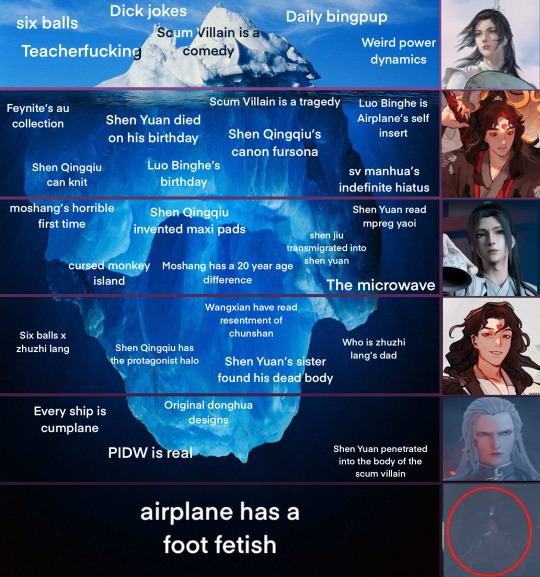
SHEN YUAN TIER:
- all items in this tier are either surface level details from the source material or
- daily bingpup is a popular fandom meme (used in the metal gear sense lmfao) started by @ kamkamquats on Twitter that's pretty self explanatory: kam draws and posts a bingpup picture every day! The archive is available here.
I probably should have made this point just bingpup, as I believe his origins precede kam's art, but she certainly boosted his popularity significantly, and now her art and bingpup are canonized with the publishing of the 4th volume English translation of the novel, so I thought it was a fun point!
LUO BINGHE TIER:
- Feynite's au collection: an extremely popular collection of alternate universe fics written by legendary Scum Villain fic author Feynite.
- Scum Villain is a tragedy: an interpretation of the books that poses that from every other perspective besides Shen Yuan's, Scum Villain is an incredibly depressing tragedy.
- Luo Binghe is Airplane's self insert: "Don't asky why Luo Binghe wasn't the embodiment of [Airplane's] ideal man; Luo Binghe's use had primarily been to fulfill his desire to be a badass and get revenge, as well as his desire for wanton [this section has been censored]" (The Scum Villain's Self-Saving System volume 4, page 163).
- Shen Yuan died on his birthday: Shen Yuan's death date is never given in the original novels, but in the first scene of the donghua when he dies while at his computer, you can catch a glimpse at the date reading September 21st (both his birthday and the day svsss was published!)
- Shen Qingqiu's canon fursona: binghe compares sqq to a crane multiple times in the story but is depicted as a cat in fandom much more frequently, leading people to joke about how the fandom disregards his "canon" fursona in the same way bingpup is much more prevalent than sheep binghe.
- Shen Qingqiu can knit: there's official crossover Christmas merchandise that shows all of the mxtx couples participating in different holiday activities: wangxian are decorating a tree, hualian are baking cookies, and shen qingqiu is knitting a scarf for luo binghe.
- Luo Binghe's birthday: Luo Binghe is actually the only main mxtx character that doesn't have a canon birthday. He's noted in the books as being born on "the coldest days of the year", but it's debatable whether this is late December or early January, and there's no specific date from this that we can confirm is his birthday.
- sv manhua's indefinite hiatus: much to the excitement of starved fans, a Scum Villain manhua began publishing in 2019. It ran for a grand total of 3 wonderful weeks before being unceremoniously put on indefinite hiatus because of drama within the fanbase stemming from rumors that the artist/company drawing it actually hated scum villain. It has yet to return.
SHEN JIU TIER:
- Moshang's horrible first time: MXTX stated in a Q&A interview that neither Mobei-Jun nor Shang Qinghua enjoyed their first time having sex together.
- Shen Qingqiu invented maxi pads: the "scum villain pad commercial" is a commercial from the first season of the donghua depicting an exchange where Ning Yingying is self conscious about going out on her period because her sanitary supplies aren't cute, so Shen Qingqiu magics her up some maxi pads.
- Shen Yuan read mpreg yaoi: "#18 Peerless Cucumber [Expert]: Upthread, keep cool. This forum has a lot of Green JJ sisters 😎" (The Scum Villain's Self-Saving System volume 4, page 145). / "''Great Master' Liu! Airplane Shooting Towards the Sky didn't write a green Jinjiang mpreg novel!'" (The Scum Villain's Self-Saving System volume 4, page 295).
- Shen Jiu transmigrated into Shen Yuan: A somewhat popular theory in the fandom that when Shen Jiu died, he transmigrated into modern day Shen Yuan the same way Shen Yuan did to him.
- Cursed monkey island: Cursed monkey island is/was a private discord server made up of very og sv fans that was known for outputting somewhat dark/off-color/weird fics for each other, often with funny porn spoof names and niche concepts. The first fics from there were published in 2018, while the last fic in the collection seems to have been published in 2022, so they might still be active, but I'm not sure.
- Moshang has a 20 year age difference: Shang Qinghua died at at least age 20 (probably older) and since he transmigrated into a baby, he has 20 extra years of consciousness from his first life on the PIDW native characters, who he meets when they're both teenagers in the Airplane extras. Though physically the same age group, he would've been mentally somewhere around 30-40 years old at this point getting bullied by teenagers.
- The microwave: some of the first previews released for the donghua were static turnaround videos of the 3D models set to elevator music -- after these dropped, it was radio silence on the show's status for a long, long time. Fans called these previews "the microwave" because of the static rotation of the models and referred to the time it took for the donghua to come out as "defrosting it in the microwave". There's a fair amount of art/memes from this time period featuring the characters literally inside microwaves, even to the point where people made microwave-themed SV merch. When the donghua finally came out bingqiu were declared "free from the microwave" and a wave of fanart of them destroying microwave prisons emerged.
TIANLANG JUN TIER:
- Wangxian have read resentment of chunshan: in the mdzs audio drama extra episode "Accompanying you to sleep - Lan Wangji", Lan Wangji takes care of a drunk Wei Wuxian by getting him ready for bed. Towards the end of the episode, Wei Wuxian asks Lan Wangji to read him a bedtime story. Lan Wangji says he isn't good at telling stories and Wei Wuxian suggest he reads him The Resentment of Chunshan (bingqiu fanfiction). Unfortunately, Lan Wangji had never heard of it before and thereby could not ASMR it.
- Six Balls x Zhuzhi Lang: a rarepair (also called bamboo balls) written by the lovely Alex here.
- Shen Qingqiu has the protagonist halo: a theory/headcanon suggesting that when Shen Yuan transmigrated, the role of protagonist and subsequent protagonist halo left Luo Binghe and transferred onto him. Often used in angst canon divergences wherein due to the lack of a protagonist halo, Binghe dies from an event he otherwise would have survived because of his story invulnerability.
- Shen Yuan's sister found his dead body: an angst headcanon centering around the idea that Shen Yuan's sister found his dead body rotting in his apartment after he died- very good art made about this here!! (Gore/blood cw)
- Who is zhuzhi lang's dad: we all know zhuzhi-lang's dad was a big snake but what kind of big snake? How big? Why did his mom fuck him? all important questions heavily debated about in this fandom.
MOBEI JUN TIER:
- Every ship is cumplane: we already know Luo Binghe is Airplane's self insert, and Mobei-Jun's cold demeanor is somewhat reminiscent of Peerless Cucumber's tsundere wife-isms, making bingqiu and moshang arguable proto-cumplanes. However, we can go further and argue because Airplane created the entire world of PIDW, all of it in a way reflects him and his feelings, therefore meaning that because it loves Shen Qingqiu and Shen Qingqiu loves it back, every possible PIDW asset x sqq is cumplane in its basest form.
- Original donghua designs: the first pv for the donghua actually featured slightly different designs for bingqiu, which were then changed later in production! You can see the original ones here.
- PIDW is real: someone actually posted PIDW on jjwxc so you can get the real Shen Yuan experience.
SHANG QINGHUA TIER:
- Shen Yuan penetrated into the body of the scum villain: there is a listing for the svsss donghua on Amazon prime video (though no episodes are actually available) which features this banger summary:
An ordinary youth, Shen Yuan, after reading the novel "Arrogant Gods and Demons' Journey", triggers the mysterious system so that he crosses into the book world and penetrates into the body of villain--Shen Qingqiu. Shen Qingqiu's disciple, Luo Binghe, is the main character of the novel.
- Airplane's foot fetish:
636 notes
·
View notes
Text
@notstinglesstoo replied to your post “The thing is, and I haven't gotten a chance to...”:
I saw someone not long ago say cr has always felt like a product to them vs D20 feeling organic and I protected my peace but I did want to ask them if they were brain dead
Oh man I wanted to address this at length because I feel this. My posts have been centered, again, specifically on published journalists picking Daggerheart aprt critically and applauding themselves for doing so despite it being within a couple of hours of its release and therefore any analysis is necessarily going to be based on at best, a skim, when they just as frequently will claim D20 seasons/Kollok are flawless works of genius based on only a partial read, but man D20's got a fandom problem too. (and all of the following comes with the caveat of "I really enjoy D20, and Dropout, and while we're at it WBN and NADDPod which both are half D20 Intrepid Heroes cast, and think Brennan is a particularly brilliant GM, and also it's obvious that the D20 and CR casts are on great terms, and wish the fandom for D20 were more welcoming and enjoyable because I feel it wasn't like this when I first started watching, as a CR fan, in late 2019 and has since curdled into something really weird and bad.")
The first point is the obvious one: technically speaking these are both products. These are performers doing an art form; it is also a portion of how they make their money with which they can buy goods and services. Believing that art is inauthentic when the artist gets paid and acknowledges that is a thing that happens is a fucking libertarian position at best. Like cool, you think only people who are independently wealthy by other means can make art, because it's not real labor, my kid could paint that, etc etc.
The second point is also pretty obvious. I have pushed back pretty hard on the "uwu CR is just watching friends! it's like we're in their living room" mentality among the fandom, which has decreased, thankfully, but like...it did in fact start organically as a private home game, and they decided, when invited, to make it A Show For An Audience. D20 was created on purpose as a show for an audience. This doesn't make it bad or fake - reread the previous paragraph - but in terms of "this is an group of people who really played D&D in this world together even before the cameras were rolling," Critical Role literally is that, and D20 is not.
I think beyond that...my biggest issues with the D20 fandom are first, the level of discourse is abominable. The tag is almost always just shrieking praise and the most surface-level readings possible. I keep bringing up the "Capitalism is the BBEG" mug but it genuinely sums up so much of how I feel; people who want their existing beliefs fed to them as surface-level no-nuance takes. I mean capitalism is fucking terrible but I do not need every work I watch to have a character turn to the camera and say "capitalism is bad" to enjoy myself, and indeed it makes it harder due to the lack of subtlety and grace. For all D20 fans complain about how unhealthily parasocial CR fans can be (and some can be), I find that a lot of the most unhealthily parasocial "how dare they BETRAY my TRUST by having a ship I don't like or not speaking up about every single societal ill" ex-CR fans move over to D20 and then pull the exact same shit; it simply doesn't get called out. Every time D20 fans are like "we don't want to become the CR fandom" it's like "your toxic positivity and unhealthy parasocial behavior exceeds the HEIGHT of what I've seen in CR; the main difference is that CR started in 2015 when D&D was still shaking off the raging bigot dudebros and so in the early days it acquired more of those fans, whereas by the time D20 came around the landscape of who played D&D and watched Actual Play had shifted wildly, and you need to judge September 2018 D20 fans in parallel to September 2018 CR fans, not September 2015 CR fans."
I also feel, and I alluded to this in the post about journalism, and other people have said this better than I have, but the pedestal people have put D20 on does feel like a single...not even misstep, but just, difficult choice that doesn't capitulate to the loudest fans will bring a good chunk of that fandom crashing to the ground. And that includes the journalists. For all the fans of CR can still be obsessed with the cast to an unhealthy degree? The cast and company have put up pretty strong boundaries and have not budged. D20 hasn't, and I think the second they do - and I think it will be for their benefit as a company and a channel - a big chunk of their most vitriolic CR-hating portion of the fandom will viciously turn on them.
#notstinglesstoo#nonrebloggable bc god it's hell week for me i know i've been shooting off opinions bc that is how i blow off steam#but like. i can't have this break containment i got shit to do
86 notes
·
View notes
Text
Thank you again for another great year allowing us to share original photographers with you. We will be taking a break and return January 8th. In the meantime we have set up a queue filled with photos from our past featured blogs this year. If you are looking for new blogs to follow, please have a look at the list below. We have listed a general description of the types of photos each blog posts, so it will be easier for you to find the ones you like. And of course applications are still open during our break. Hope to see you all again in 2024. Happy holidays and much love from all of us at LEN.
January
341 @cissaking (landscape)
342 @foliorumviridis (forests, landscape)
343 @rchrgd (nature, forests)
344 @marljin (forests)
February
345 @highways-are-liminal-spaces (landscape, animals)
346 @dk-thrive (landscape, quotes)
347 @fotozeiger (landscape)
348 @alyaly (landscape, flowers)
March
349 @joeswildlifephotos (animals, landscape)
350 @silver-frog (landscape, urban)
351 @bedr-focus (landscape, urban, animals)
352 @alli-takes-photos (nature, landscape, urban)
April
353 @thethingsiveseen-photography (landscape, animals, flowers)
354 @rock-cedar-mosquito (forests, landscape)
355 @zedensposts (landscape, animals)
356 @whitneybarkman (nature, forests)
May
357 @renmoldovan (landscape, animals)
358 @gettinglostisnotawasteoftime (landscape, forests)
359 @nwalthall (landscape, flowers, portrait)
360 @ivacunja (landscape)
361 @moer-koffie (flowers, animals)
June
362 @lbk-photography (landscape)
363 @stillwater67 (landscape, urban)
364 @desomnis (landscape, urban)
365 @tomo8455 (flowers, animals, landscape)
July
366 @bluebelly-sun-serpentine (nature, landscape)
367 @carmen-art (landscape)
368 @thomaswaynewolf (landscape)
369 @birdmemorandum (birds)
370 @thecorpsofrediscovery (landscape, urban)
August
371 @orofeaiel (forests, fungi, animals)
372 @sugiichi (birds)
373 @oscar-out-of-a-suitcase (landscape, urban)
374 @pela-schmidt (landscape)
September
375 @andulkaphoto (nature, urban)
376 @orendarling (landscape, urban)
377 @thomas--bombadil (birds)
378 @kiteknots (nature, forests)
October
379 @differentharmonywasteland (nature)
380 @zocher (landscape, flowers)
381 @mbhfphotos (nature, fungi, forests)
382 @wild-e-eep (nature, fungi, animals)
383 @franz-bauch-foto (forests)
November
384 @vnvnationfan (landscape, flowers)
385 @sssnapspics (nature, animals)
386 @ohlsdorf-cemetery (nature, forests, cemeteries)
387 @flippantsmeagol (landscape)
December
388 @coenderuiter (landscape, forests)
389 @opdrie (landscape, forests)
2022 Featured Blogs | 2021 Featured Blogs
2020 Featured Blogs | 2019 Featured Blogs
2018 Featured Blogs | 2017 Featured Blogs
2016 Featured Blogs
#photographers on tumblr#original photographers#nature#landscape#original photography#nature photography#landscape photography#featured blog#photography#landscape exposure network#year end#2023
121 notes
·
View notes
Text
Drawfee Bits Wrapped (2023)
Cats (2019)
Episodes referenced: 14 (14.89%)
Episodes not referenced: 80 (85.11%)
First reference: January 17
Last reference: November 30
Longest streak of no references: 20 episodes (June 1–August 24)
Shortest streak of no references: 0 episodes (Referenced in the September 14 and 19 episodes)

Cascada (2005)
Counting for Cascada started on August 15.
Episodes referenced: 8 (22.22%)
Episodes not referenced: 28 (77.78%)
First reference: August 15
Last reference: December 26
Longest streak of no references: 12 episodes (August 22–October 3)
Shortest streak of no references: 0 episodes (Referenced in both the August 15 and 17 episodes; then again in both the October 12 and 17 episodes)

Combined statistics
Again, note that this only covers August 15 onward.
Episodes where both were referenced: 2 (5.56%) (October 12 and November 30)
Episodes where only one was referenced: 10 (27.78%)
Episodes where neither was referenced: 24 (66.67%)
Other Notable Bits of the Year
This is a list I kept this year of the most enduring bits, but it's obviously biased.
Fight Song (Origin: Patreon Bonus Stream 03/24/2023)
Italian Cold Steel Cinquedea (Origin: Turning Words Into Drawings)
Merobiba (Origin: Turning Medieval Words Into Art)
So do, Scooby (Origin: Turning Monster Hunter Armors BACK Into Monsters)
#also please feel free to add on your favorite fan creations of the year -- there were so many good ones!!#thank y'all for hanging out with me this year and making this so much fun :)#thank you for the kind words and the corrections most especially!#drawfee#not an episode count#charts and data#year in review#long post
136 notes
·
View notes
